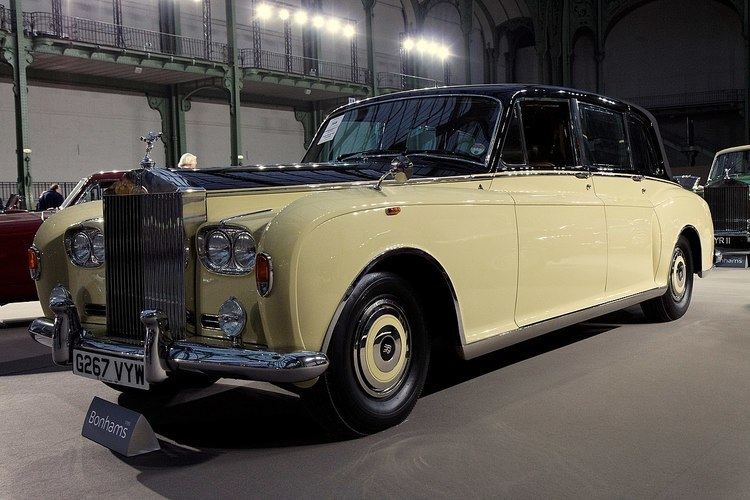Production 1968–1990374 produced Layout FR layout | ||
 | ||
Related | ||
The Phantom VI was a British ultra-exclusive rolling chassis made from 1968-1990. From 1968 to 1973 it was manufactured by Rolls-Royce Ltd, and 1973-1990 by its successor Rolls-Royce Motors. They were bodied as limousines but there were a few landaulettes.
Contents
Construction
Based on the Phantom V, the Phantom VI had a re-styled fascia (dashboard) and was powered by an engine derived from the current Rolls-Royce Silver Shadow. Most of the coachwork was created by Mulliner Park Ward, usually in limousines form, though a few landaulettes were made.
The Phantom VI was the last Rolls-Royce with a separate chassis. It featured coil springs in front, leaf springs and live axle in rear, and drum brakes on all four wheels. The car was powered by a 6,230 cc (380 cu in) 90 degree V8 with a bore of 104 mm (4.1 in) and stroke of 91.5 mm (3.60 in) with twin SU carburettors, coupled to a 4-speed automatic gearbox. In a 1979 upgrade, engine capacity was increased to 6,750 cc (412 cu in), a 3-speed automatic gearbox with torque converter was substituted, and separate front and rear air conditioning units were provided. Inclusion of the engine from the Rolls-Royce Silver Spirit in 1982 increased engine displacement once more, to 6,750 cc. In 1990 the last Rolls-Royce Phantom VI chassis were built, however as the completion of the actual car by Mulliner Park Ward (the erection of the body) took around 18 months the last cars were made in the period of the next two years. The very last Rolls-Royce Phantom VI, coincidentally also the last Landaulette body, was completed and delivered to the customer in summer of 1992.
A total of 374 Phantom VIs were made. Unlike the Rolls-Royce Phantom V, they were never sold in the United States, due to United States Environmental Protection Agency and National Highway Traffic Safety Administration design legislation.
Design of a Phantom VII based on the Silver Shadow's body was discussed in the 1970s, but plans were scrapped. No prototypes were built.
Famous customers
Within the fleet of cars used by Queen Elizabeth II and her family in the United Kingdom are two Rolls-Royce Phantom VIs: the Silver Jubilee Car (presented by the British motor industry to celebrate her 25th anniversary on the throne in 1977), and a more conventional 1986 model. These two cars were the official state cars until the introduction of the two Bentley State Limousines in 2002. Like all British state cars, the Phantom VIs have a special mount for a Royal Standard and coat of arms. When in use by the Queen, the Spirit of Ecstasy is replaced by a custom-made solid silver model of St George slaying the dragon and the car carries no registration plates. In Australia, the monarch, her family, and the Governor-General of Australia use a Rolls-Royce Phantom VI dating to 1970. It is typically used only rarely, such as for the state opening of parliament or the swearing-in of a new governor-general.
On September 2010 a Phantom VI that belonged to Mohammad Reza Pahlavi, the late Shah of Iran, was put on display in Niavaran Palace Complex in Tehran.
Post-manufactured Phantoms
Three other Phantoms were built between 1995 and 1997, also by order of the Sultan of Brunei. This car was named Rolls-Royce Cloudesque and sometimes referred to as Rolls-Royce Phantom VII. The exterior reminds one of a stretched Phantom V Limousine; the extra length being added at the B-pillar. The boot is redesigned, looking more like that of a Silver Seraph. The headlights were designed in a Silver Cloud III style (but with chromed eyelids), hence the name Cloudesque.
